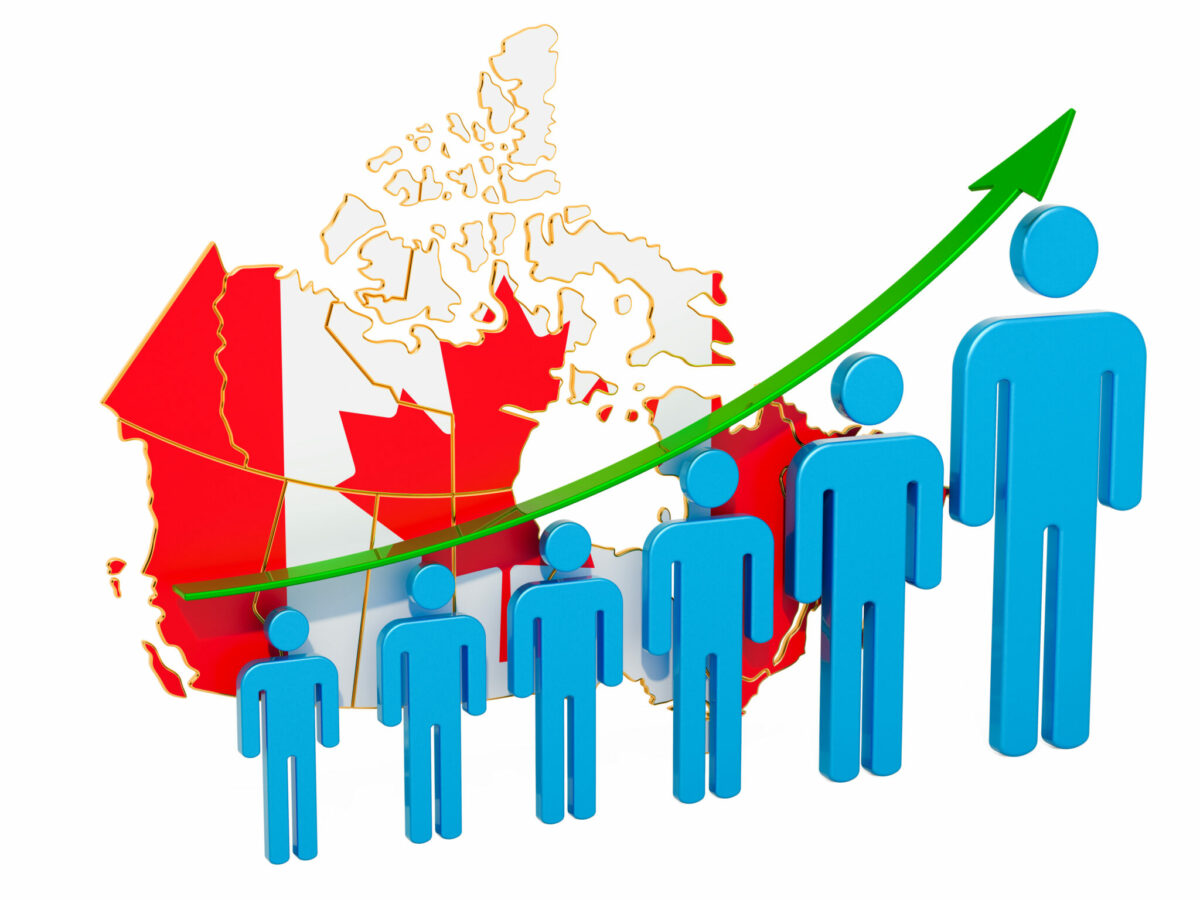Canada Immigration News: Canada’s immigration fueled population growth in the first three months of this year, the likes of which it hasn’t seen for a first quarter in over 30 years.
“Canada’s population was estimated at 38,654,738 on April 1, 2022, an increase of 127,978 people up three tenths of one percent from January 1, 2022,” reports Statistics Canada.
Read More Canada Immigration News
Saskatchewan eyes more immigrants to bring population to 1.4 million
Nova Scotia Reaches One Million Population Milestone Through Immigration
Canada’s population growth heavily boosted by immigration during Covid-19 pandemic
“This is the highest first-quarter growth rate since 1990 and continues higher growth after the lower levels seen in 2020, related to the COVID-19 pandemic.”
Two provinces and one territory achieved milestones in the first three months of the year.
Ontario, New Brunswick and Nunavut reach population milestones
Ontario’s population passed the 15 million mark with 15,007,816 and New Brunswick surpassed 800,000 with a population of 800,243.
New Brunswick Premier Blaine Higgs, who said the population growth is a sign the province has emerged from the COVID-19 pandemic stronger than ever, was quick to attribute the population growth to a increase in immigration.
“In the past calendar year, we have welcomed more than 8,400 newcomers from other countries,” Higgs told an audience of business people in Fredericton during his annual state of the province address on April 1st.
“Our teams exceeded all immigration targets, including skilled trades, French-speaking newcomers and international student applications.
Watch the video
The premier also said his province is ready for a strong economic recovery.
“Last week, the Bank of Montreal recognized our strong population growth and the rapid deployment of vaccines that helped us weather the pandemic,” he said.
“Scotiabank said we have a concrete plan to prudently increase spending while maintaining balance. And the Royal Bank said New Brunswick has a lot of successes to build on. We certainly do.
Of Canada’s three territories, Nunavut’s population topped 40,000 in the first three months of this year.
Immigration credited for boosting population growth
This population growth is directly attributable to Canada’s pro-immigration programs and strategies, notes Statistics Canada.
“International migration remains the main driver of growth in the country,” noted Statistics Canada.
“Canada welcomed 113,699 immigrants in the first quarter of 2022, the highest number of immigrants in a first quarter since 1946, when quarterly data became available.
In the first quarter of this year, Nova Scotia, New Brunswick and Alberta experienced the fastest population growth while the Yukon Territory became the only region in the country to experience a decline in population.
The latest data from Immigration, Refugees and Citizenship Canada (IRCC) shows that Canada welcomed a record 406,005 new permanent residents in 2021.
In the first four months of this year, the country saw an increase of 149,820 new permanent residents, putting it on track – if current trends continue – to welcome 449,460 new permanent residents by the end of This year.
This is well beyond the already ambitious immigration target set for 2022.
Canada on track to surpass record immigration target this year
In his Immigration Levels Plan for 2022 to 2024Canada aims to welcome 431,645 immigrants this year, 447,055 next year and 451,000 in 2024.
“Immigration has helped make Canada the country it is today. From agriculture and fishing to manufacturing, health care and the transportation sector, Canada depends on immigrants,” Immigration Minister Sean Fraser said earlier this year.
“We are focused on economic recovery, and immigration is key to getting there. Setting bold new immigration targets, as outlined in the 2022-2024 Levels Plan, will further contribute to bringing the immeasurable contribution of immigrants to our communities and across all sectors of the economy.
Two major drivers of immigration to Canada this year are temporary to permanent resident (TR-to-PR) which debuted in May last year.
Although applications for the TR to PR program closed in early November last year, not all applications have been processed and the immigration levels plan calls for 32,000 new permanent residents under this way this year.
Another program that fuels immigration is the Canada-Ukraine Emergency Travel Authorization (CUAET) which had, as of June 15, received 312,548 applications, of which 136,877 had been approved.
Canada is committed to accepting an unlimited number of Ukrainian refugees under CUAET.
The Canada Border Services Agency notes that so far this year, 8,366 Ukrainian citizens and Canadian permanent residents of Ukrainian descent have entered the country by land and another 43,017 have arrived by air.
Created on March 17 to help Ukrainians forced to flee after Russia launched its invasion of Ukraine on February 24, CUAET offers them and their immediate family members temporary residence in Canada for a period maximum of three years.
CUAET provides Ukrainians fleeing war with work and study permits for up to three years
Once in Canada, they are entitled to free open work permits and study permits and can therefore take up employment with almost any Canadian employer or enroll in any educational program in Canada.
They are also eligible for a one-time payment under the Canada-Ukraine Transitional Assistance Initiative (CUTAI) of $3,000 per adult and $1,500 per child as well as settlement services, including language lessons, information about life in Canada and help finding jobs.
Parents and guardians can access this financial support by submitting an application for themselves, a spouse and dependents. Payments will be made by direct deposit, so applicants will need to have a bank account with a Canadian financial institution in the same name as the adult’s temporary resident status document, i.e. work permit, study permit, temporary resident permit or visitor record. .
These Ukrainians can also apply for permanent residency and any work experience they gain or study while in the country will only enhance their Comprehensive filing system (CRS) if they decide to complete Express Entry profiles and apply for permanent residency.

